By Sean Fagan
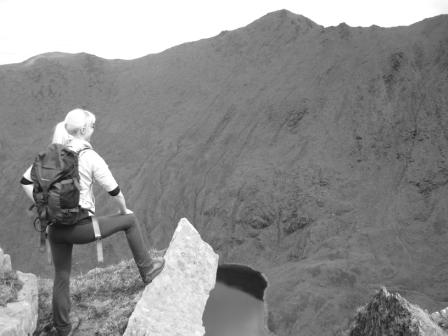
It’s easy to be lulled into a false sense of security when surrounded by the beauty of wild places (Photo: Sean Fagan).
BECOMING ACQUAINTED WITH WILDERNESS
“Do nothing in haste, look well to each step; and from the beginning think what may be the end”
Edward Whymper
.
.
The exposure to the grandeur of wild tracts of land is an experience that can give great enjoyment.
However, it’s easy to get carried away by the beauty and solitude of a wilderness and ignore the dangers that can lurk under its veneer of serenity.
Many of us live in a world generally cosseted from causing ourselves physical harm through poor decision-making. That’s not the case in the wild. You alone and no-one else is responsible for your safety and well-being when visiting a wilderness (especially during solo excursions).
All the instructional literature & documentaries, training courses, advice, meticulous planning and relatively safe outdoor excursions (all invaluable in there own way!) will never replace getting to know a truly wild place on its own terms - but that’s a large part of its attraction.
IGNORANCE IS NOT BLISS
.
THE EXAMPLE OF CARRAUNTOOHIL
AND WHY HIKING IN SNUG BOOTS IS BAD FOR YOU
.
Located in the mountainous south-west of Ireland is Carrauntoohil – Ireland’s highest mountain (1039m).
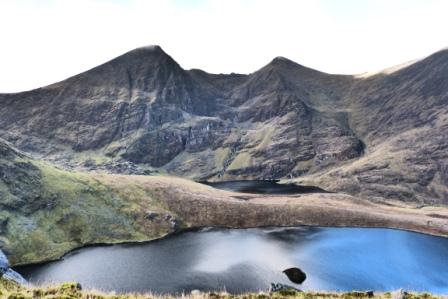
The very changeable, often inclement weather of Carrauntoohil (left peak) is an ever-present threat, even in summer (Photo: Sean Fagan).
Like a lot of high mountains, Carrauntoohil is a popular tourist destination. Many of the tourists that visit Carrauntoohil have very limited or no experience of the common hazards associated with mountains.
I've seen two individuals ascend the precarious scree slopes of Carrauntoohil in snug boots. Once, I witnessed someone ascend Carrauntoohil during a bone-chilling day in winter - wearing sandals!
I've also watched a group of young lads ascending Carrauntoohil about one hour before nightfall when there was at least two and half hours of hiking left to do. They were wearing only T-shirts and jeans/shorts.
I don’t mean to use the above examples as an excuse to mock. I've made mistakes myself. I will inevitably make more mistakes (hopefully not the same mistakes!).
My overall point is to highlight a certain type of obliviousness that is transferred by many individuals to the natural world with a reckless determination.
So much of outdoor health and safety comes down to being cautious.
DEVELOPING A CAUTIOUS NATURE
Living in a wilderness area has a lot to do with walking a line between boldness and caution.
The boldness to make the right decision in tight situations relies a lot on knowing the risks. Most of the time, erring on the side of caution is the right choice.
Consider the following definition of caution: Close attention or vigilance to minimize risk
The aim of this article is to provide 4 habits that will improve your close attention or vigilance to minimise risk, when in a wilderness area. The suggested habits are simple, easy to remember and apply – and that’s a large part of their effectiveness. The four habits that will improve your wilderness safety awareness are:1. Taking your time 2. Deep breathing 3. Adequate rest 4. Honing your intuition
N.B. The aim of this article is to be provide sound advice that compliments standard outdoor/bushcraft safety training & advice. It’s not a substitute for, among other practises, high-quality bushcraft training and outdoor medical/wilderness first aid etc.
4 HABITS THAT WILL IMPROVE YOUR OUTDOOR HEALTH & SAFETY
1.
TAKING YOUR TIME STRIVE TO BE SLOW
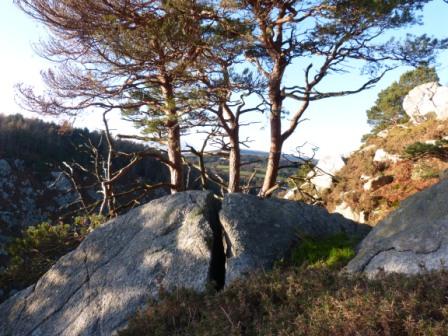
What’s the rush? Walking fast across this boulder-strewn landscape is an injury waiting to happen. A slow walking pace is required (Photo: Sean Fagan).
Did you ever watch a good craftsperson at work? His or her actions and thought processes are measured. In addition, whenever an important decision has to be made, a good craftsperson often pauses to think things through.
That conscientious approach is exactly the type of attitude that bushcraft practitioners should strive to emulate.
So many outdoor hazards and accidents can be avoided by one simple piece of advice – slow down. It seems simplistic but it’s very pertinent advice for outdoor living. So many accidents are caused in haste, when we lose good judgement and awareness of what we are doing.
Being hasty or impatient may be symptomatic of modern living but such a state of being has no place in the wild. The modern urban/rural environment is very much a man-made environment that is generally safer than wild places.
Just walking a mile in a wilderness area can be, potentially, bedeviled with a whole slew of hazards for the person that rushes around, oblivious.
In short, wild areas demand your attention.
Cody Lundin
THE KING OF CHILL
.
Cody Lundin is an exceptional primitive survival expert. He also goes barefoot. This behaviour might seem reckless, but part of his rationale for doing so is - being barefoot forces him to walk slowly through wild areas.
He believes that walking slowly enables him to conserve energy, and be more connected to his surroundings so that he can, for example, be more observant of resources. Just as importantly he is more aware of potential hazards as they arise because of his slow, attuned way of passing through a landscape. It’s hard to fault his logic.
Incidentally, Cody has been walking barefoot for many years. His feet are conditioned (coarsened) to harsh underfoot conditions and to the cold (For the record I’m not recommending barefoot walking).
Taking a slower pace is not only good, general safety advice when outdoors but will also improve other bushcraft skills that require good observation skills and a slow pace e.g. tracking, mushroom hunting, wildlife observation and navigation are a few bushcraft activities that come to mind.
.
2.
THE OUTDOOR BENEFITS OF DEEP BREATHING
THE ZEN OF BREATH
.
A great tip for staying calm, thinking more slowly and rationally, is deep breathing.
Did you ever notice, when stressed, that your breathing becomes more shallow and faster? Anxiety creates an agitated reaction that can trigger, amongst other symptoms, fast, shallow breathing. It’s an unpleasant, self-feeding loop.
A great way to counteract the negative effects of an anxious mind is to practice deep breathing. Deep breathing releases tension associated with anxiety. It also increases mental clarity - which is crucial for good decision-making.
The idea of deep breathing may seem a little esoteric - lacking any realistic application to bushcraft. However, when outdoors, especially when travelling through, and living in, a wilderness area, there will inevitably be important decisions that need to be tackled.
Ambivalent, potentially risky situations require a clear mind.
Experience is invaluable, but no one is immune to the mental fog that occurs from anxiety.
Taking your time, when possible, and fully assessing the situation will enable to you get out of a confused state of mind and into a clear-headed state of mind, and deep breathing has been proven to greatly facilitate a slower, clearer state of mind.
.
How to Practise Deep Breathing: • Inhale slowly through your nose (you can inhale through your mouth) and gently fill most of your lungs (especially the lower lungs – you should feel your diaphragm expanding). • Pause briefly • Then slowly exhale through your mouth until most of the air in your lungs is expelled. • Repeat the process.You feel will feel calmer, more relaxed, usually after 2-5 minutes of deep breathing.
Deep breathing is one of those habits that becomes more automatic the more you practise it.
I’m not suggesting you space off in the woods - focusing solely on how well you are breathing. What I’m suggesting is, when faced with important decisions – deep breathing can be a great outdoor aid for thinking more clearly and reducing anxiety.
Personally, I find deep breathing to be a convenient, quick and effective way for improving my concentration and being more attuned when outdoors. Deep breathing also improves my ability to be decisive in tight situations.
I urge you to try it – after all its free and has quite a few health benefits, both mental and physical.
3.
ADEQUATE REST
KEEPING YOUR MIND, BODY & SENSES SHARP

This warm, springy bed made from natural materials will provide a good night’s sleep (Photo: Sean Fagan).
.
.
Living outdoors is often hard physical work. Years ago, during an 10 week camping trip in Maine, USA, I slept a lot (an average 9 hours, but often 10 hours, per night). I needed it, as I was reasonably active every day.
Sleeping well is a reality of living outdoors - or at least it should be, especially on long wilderness trips.
Mental clarity, positivity, enthusiasm and a capacity to work harder for longer are the rewards of a well-rested body.
Also, being well rested keeps the senses sharp - and good sensory awareness is a key element in anticipating and perceiving many safety issues.
Of course you can push it hard for a few days, a week or more. Eventually fatigue will accumulate, whereby more rest is required.
There is an abundance of outdoor enthusiasts such as explorers and extreme endurance athletes that have the ability to push themselves hard for extended periods of time. For sure, such exceptional mental and physical endurance is admirable. If that type of self-testing is something you like to do, you have my admiration.
However, this article is geared towards the bushcraft practitioner that wants to be as safe as possible when in wilderness areas. Push yourself by all means, but listen to, and respect, your body.
Excessive fatigue can make you more prone to making mistakes. Another possible side effect of fatigue is irritability – which can provoke unnecessary friction between individuals.
When possible, if more rest is needed - take it.
Immersing yourself in wilderness is just as much about being active as it is about taking the occasional time out to rest, absorb, appreciate (even revel) in nature.
By all means compile a full and challenging itinerary of bushcraft/outdoor activities when in a wilderness areas but leave some blank spaces on your itinerary to just chill out - or at least have the flexibility to alter your busy itinerary to allow time for adequate recovery.
4.
HONING YOUR INTUITION
TRUSTING YOURSELF
.
There should be, on occasion, a little nervous voice or a slight feeling of nervousness in the back of your mind, reminding of what can go wrong whenever an important decision needs to be made that relates to your personal safety. Why? Because when you are in a wilderness area or any relatively remote, uninhabited area – the buck truly stops at you.
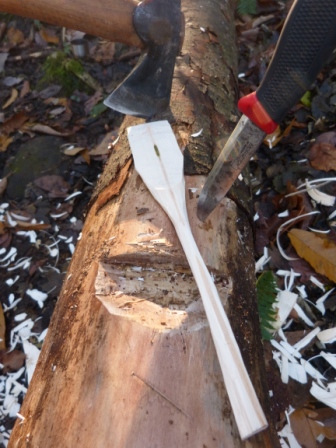
The right attitude is just as important as good technique. Standard, sharp-edged bushcraft tools such as the knife & axe, should to be treated with an attitude of respect at all times (Photo: Sean Fagan).
.
Imagine the following bushcraft scenario. I’m camped in the middle of nowhere and I’m about to fell a dead tree for firewood – and a little nervousness creeps inside my head, just enough to keep my senses sharp and asking such questions as - “What if my axe slips and hits my foot?”, so I check my stance, making sure that if the axe slips there is no chance of injurious contact with my feet.
Which hopefully leads me on to ask other important, safety-related, tree-felling questions well before I land the first axe blow into the tree.
After all, if I’m on a self-imposed excursion in the wilds of nowhere I don’t want to be fumbling for my first aid kit, trying to staunch a bleeding foot or any other injury for that matter, especially if I’m a long way from professional medical help.
Having a cautious nature is an essential asset in the wild, as is good bushcraft training (including realistic, outdoor medical training).
Prevention is better than cure is the golden rule of outdoor safety.
THE PAUSE, ATTUNE, TRUST & REASSESS RULE
Whenever you are about to do a risky task and something tells you to be careful, and time is on your side, then follow this simple four-part process:- PAUSE – stop what you are doing.
- ATTUNE - pay attention to your feelings and the situation in hand.
- TRUST - what your intuition is trying to express about the situation, then...
- REASSESS - Rationally weigh the pros and cons of your situation. What’s important is to stop and reassess all relevant factors in the situation.
.
More often than not, your intuition is one step ahead of our conscious mind and is trying to steer you clear of harm.This precautionary, intuitive faculty is within all of us, and is something that is developed through accumulated, concerted exposure to the outdoors but can be improved by following the advice in this article.
Of course, the above advice is only applicable when you have time.
The sudden appearance of a bear rummaging around your camp is not the right time for assuming the lotus position : )
Context is important.
Adequate rest, deep breathing and taking your time are all habits that neatly dove-tail into each other for improving your intuition when outdoors, especially when under the occasional duress of important decision-making.
They are good, preventative measures that deter, among other issues, the hazards associated with hastiness and impatience, anxiety and sleep/rest deprivation – all of which can significantly mar your intuitive and rational thought processes..
.
CONCLUSION
.
You must strive to be as safe as possible and it must become second nature to you when alone, or with other people, in a wilderness area.
What can injure, cause illness or demoralise a lot of people are simple things: impatience, lapse in concentration, underestimating risks, overestimating technical and physical ability, lack of back-up plans, losing or damaging essential kit.
These are all situations that could have been prevented, because they were in the realm of conscious control.
With bushcraft, its often the simple things that make a significant difference:
Resting well, taking your time, practising deep breathing and trusting your intuition will make you a calmer, more attuned and safer bushcraft practitioner.
Enjoying the outdoors, and enjoying the confidence that comes with possessing the know-how to keep yourself (and people in your company) safe and well is an invaluable part of enjoying the daunting and exhilarating isolation of a wilderness.
.
Have Safe & Great Adventures,
Pioneer Bushcraft.
.
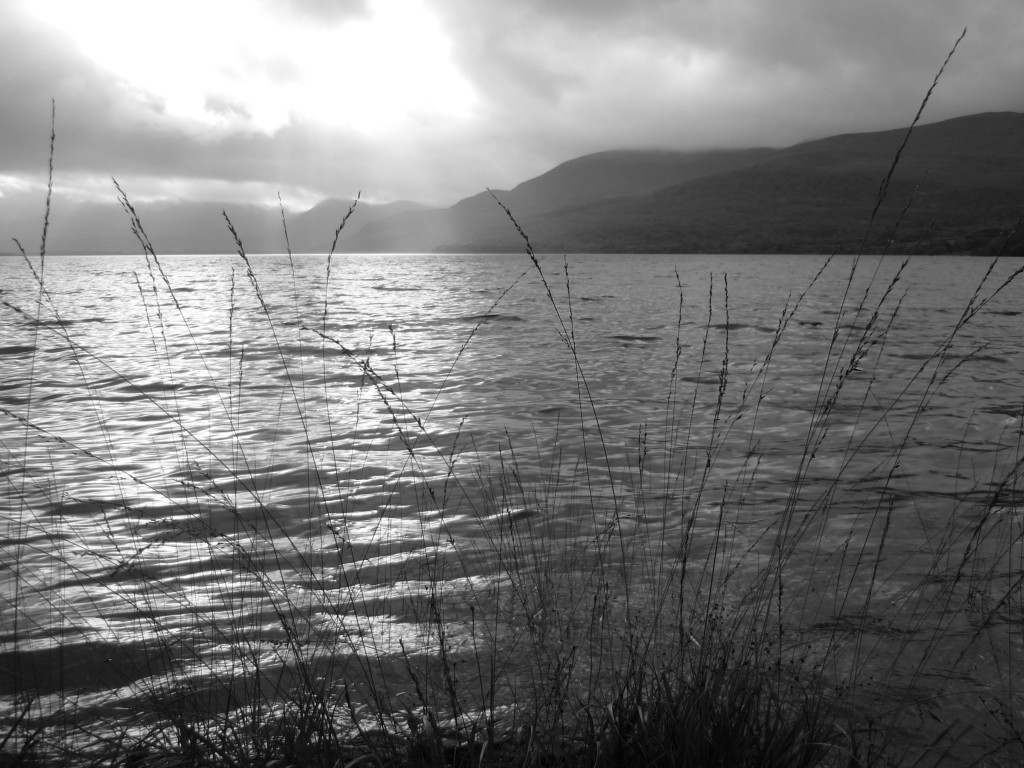
"Experience is the hardest kind of teacher. It gives the test first and lesson afterwards" ~ Oscar Wilde (Photo: Sean Fagan).
.
.
Related articles on this website:
.
*Check us out on Instagram, Twitter & Facebook for more outdoor-related topics..
Resources:- 5 Benefits of Deep Breathing (Article)
- How to Improve your Intuition (Article)
- The Importance of Rest (Article)
.
PIONEER BUSHCRAFT DISCLAIMER
The aim of this article is to provide advice that will enhance the quality of your time, and well-being, when outdoors.
Pioneer Bushcraft does not take any responsibility for the misapplication of advice in this article.
The advice in this article is very much an adjunct to, and not a substitute for, high-quality bushcraft training (including outdoor medical training), relevant research and experience, trustworthy local knowledge, a thorough risk assessments and all other health & safety considerations specific and pertinent to your outdoor excursions.
Please – when outdoors, take responsibility for your well being seriously.
It can make all the difference between a great or bad outdoor experience.

Recent Comments